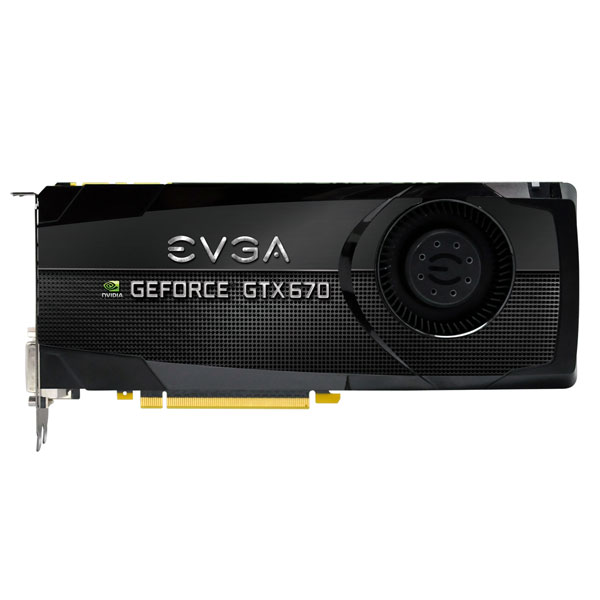Index


Reivew: For The Win wins
Our today’s task is to see whether EVGA’s GTX 670 FTW is really a graphics card for the win, or the FTW (For The Win) moniker is just a marketing ploy. Namely, we’re hoping the GTX 670 FTW will fare really well when it comes to noise, overclocking and, thanks to the high factory overclock, performance as well. If you’re looking at the picture below and wondering how can this be when EVGA used reference cooling, the trick is that this is reference GTX 680’s cooling. In fact, EVGA also took the reference GTX 680’s PCB as well.

The GPU is overclocked from reference 915MHz to 1006MHz, while the memory is up from reference 1502MHz to 1552MHz (6208MHz effectively).
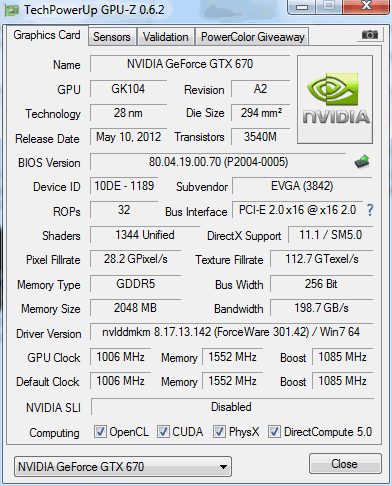
GTX 670 and GTX 680 graphics cards use the GK104 GPU. EVGA set the GTX 670 FTW’s clocks at 1006MHz, which is the reference clock on the GTX 680. Naturally, performance can’t be the same because the GTX 670 comes with one SMX unit less. This means that the GTX 670 has 1344 CUDA cores while the GTX 680 has 1536 CUDA cores.
Both the GTX 670 and GTX 680 feature identical memory subsystems, packing four 64-bit memory controllers (totaling at 256-bit) and 2GB of GDDR5. As we already said, EVGA’s GTX 670 FTW comes factory overclocked.
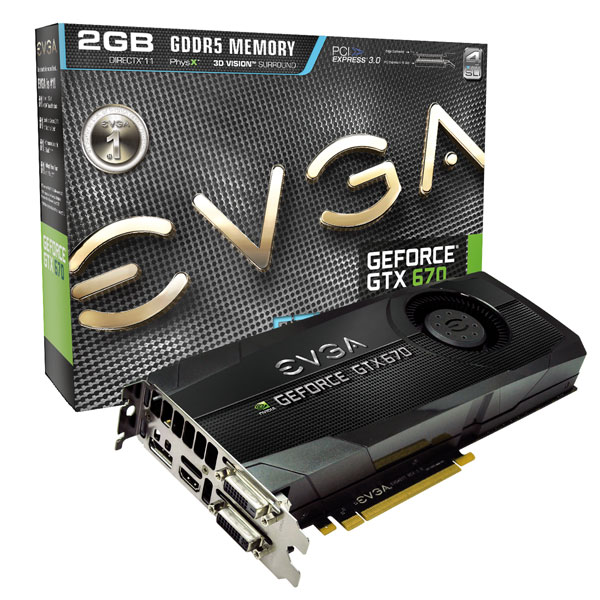
Unfortunately, it has been a while since we’ve seen Nvidia or AMD partners giving away games with their cards. In fact, some partners cut costs by not including any additional adapters/dongles. EVGA GTX 670 FTW’s packaging is more or less standard. EVGA ships a large poster and a badge with the card. The rest of the contents are listed below.
In the box you’ll find:
User Guide
Quick Installation Guide
Driver DVD
A small note about PCIE 3 compatibility
A new sticker set (Enthusiast Built)
EVGA Ful Size Poster
EVGA Case Badge
DVI to VGA Dongle
2x Molex to 6-pin Power Adapter
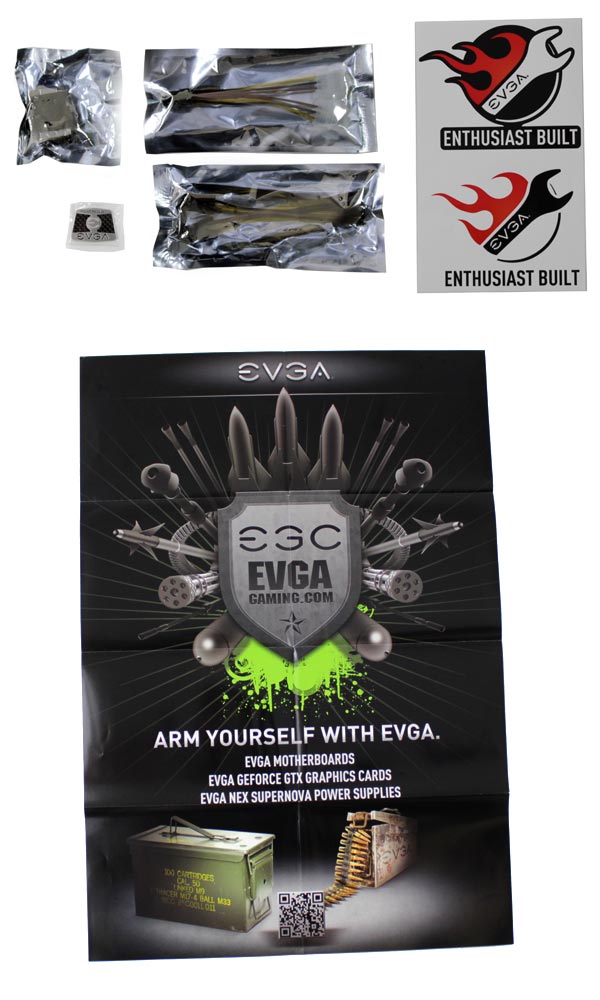
Nvidia’s partners were given a green light to use any cooling or PCB for their GTX 670s. Nvidia uses a shorter PCB in order to cut costs, but EVGA didn’t want to skimp here so the company threw in the GTX 680’s PCB and cooling solutions. Note that doing this was not very difficult since both the GTX 680 and GTX 670 use the GK104 GPU and identical memory subsystems.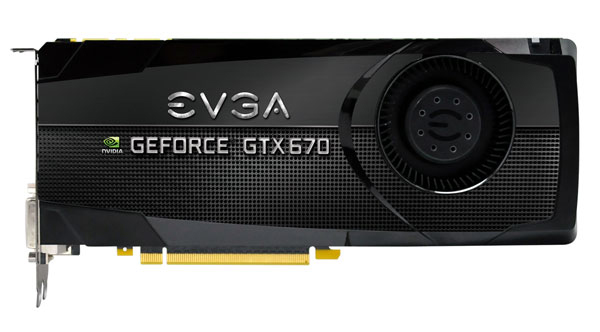

GTX 670’s reference cooling did really well when it comes to performance and noise. The fan is not very loud and working next to a GTX 670 under full load is quite comfortable. Still, reference cooling turns loud quickly once the GPU is overclocked. EVGA GTX 670 FTW’s GPU is overclocked by 91MHz (1006MHz), something which would be too much for the reference cooler to remain silent. However, EVGA ended up using a cooler that did great on performance and noise tests, which we will cover in more detail later on.
GTX 670 FTW is 25,4cm long, just like the GTX 680, while the reference GTX 670 is 24cm long. Although the actual difference in size of GTX 670 and GTX 680 is negligible, their PCBs are in fact sized differently. The difference is 8.2cm. The picture below first shows the GTX 670 FTW, followed by the GTX 670 Superclocked.
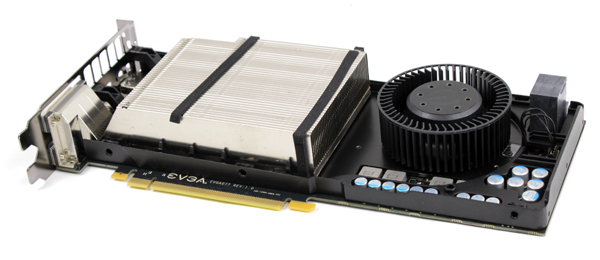
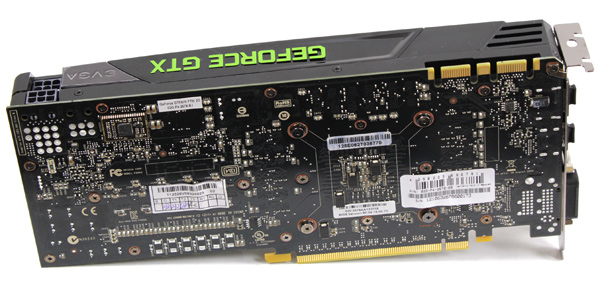
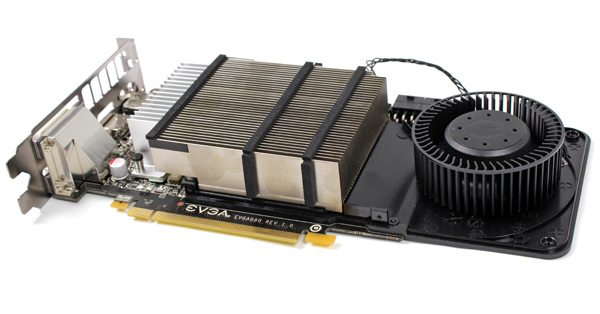
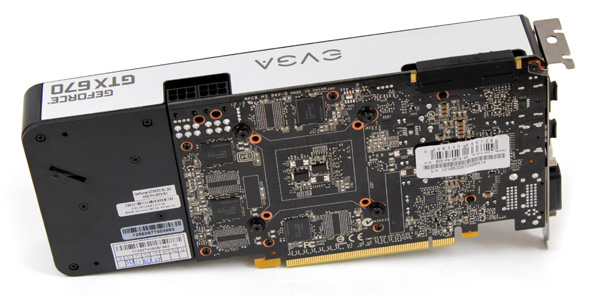
EVGA’s GTX 670 FTW packs a total of 2GB of GDDR5, in eight memory modules. EVGA used Hynix memory chips (model No: H5GQ2H24AFR-R0C), which are specified to run at 1500MHz (6000MHz GDDR5 effectively). EVGA overclocked the memory to 1552MHz (6208MHz effectively).
EVGA’s GTX 670 FTW draws power via two 6-pin power connectors, just like the reference version of the card. Thanks to GTX 680’s PCB, EVGA’s GTX 670 FTW offers superior TDP settings changes (all the way up to +145 percent)
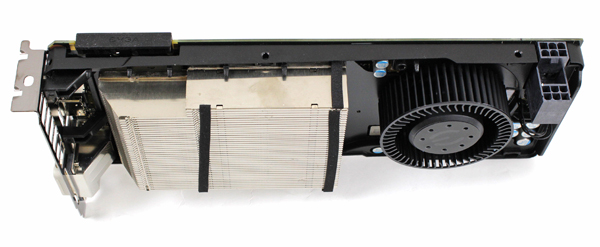
Back when we were testing the GTX 670 Superclocked, we thought EVGA’s backplate would come in pretty handy. Unfortunately, we weren’t granted the wish with the GTX 670 FTW. In case you want it, you’ll have order the GTX 680’s backplate. Naturally, this is not something that you must have, but it does look nice.

The I/O panel has two dual-link DVIs, one HDMI and one Display Port. DVI-to-VGA dongle can only be used on the DVI-I out. The protective caps are quite a nice touch. GTX 680/670 graphics card can run four displays at the same time.
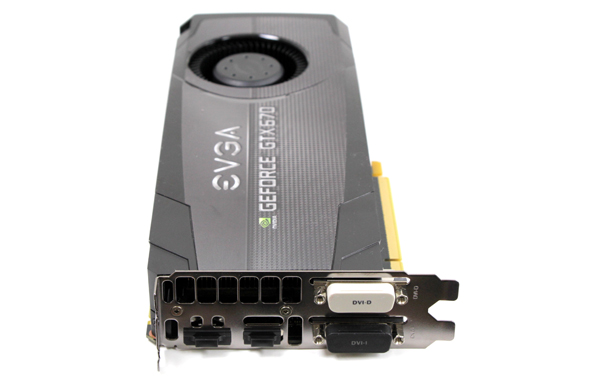
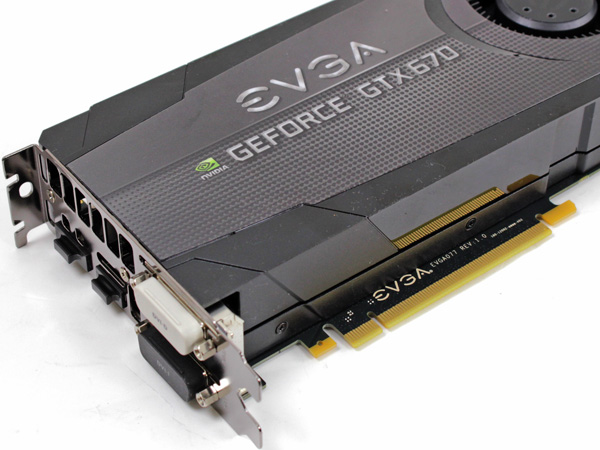
The air exhausts are wider than on the reference card, which means hot air will exit the card faster and in turn help the cooler perform better.
GTX 670 FTW graphics cards come with two SLI connectors, which means it’s possible to daisy chain up to four GTX 670 cards for some serious power.
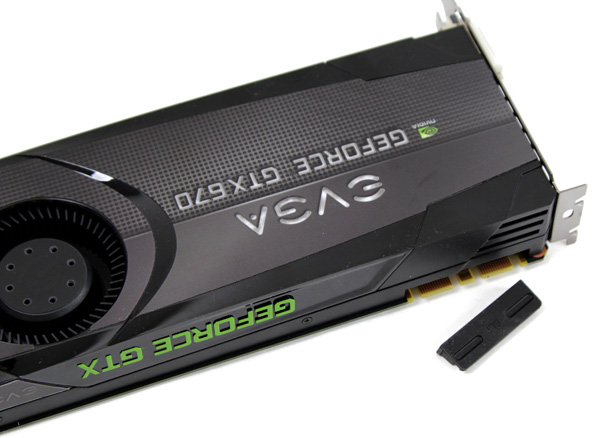
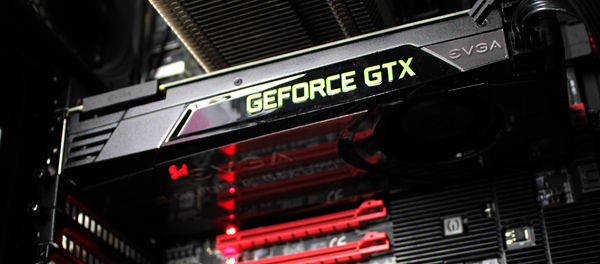
Motherboard: EVGA X79 FTW
CPU: Sandy Bridge-E Core i7 3820 (3.6GHz)
CPU Cooler: Thermalright HR-02 (Thermalright-Europa Distri www.PC-Cooling.de).
Memory: 8GB ADATA DDR3 1600 XPG Gaming series
Harddisk: OCZ Vertex 2 100 GB
Power Supply: CoolerMaster Silent Pro 1000W
Case: CoolerMaster Cosmos II Ultra Tower
Operating System: Win7 64-bit
Nvidia 301.34-desktop-win7-winvista-64bit-english-whql
amd_radeon_hd_7800_8.95.5_win7-64
12-3_vista_win7_64_dd_ccc.exe
3DMark11

Crysis 2
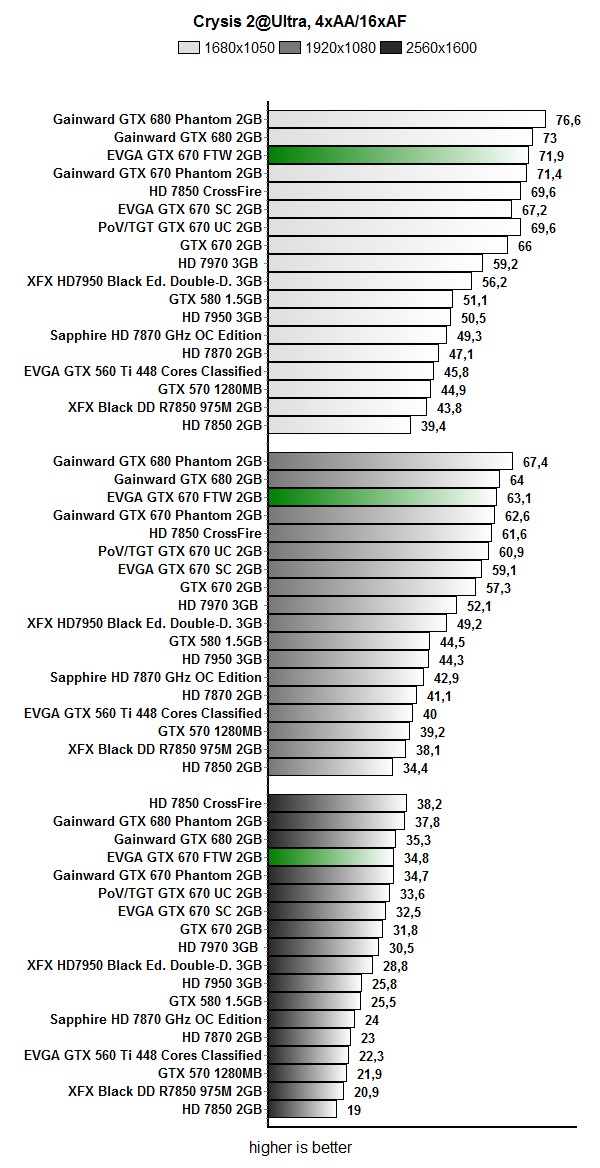
Metro 2033
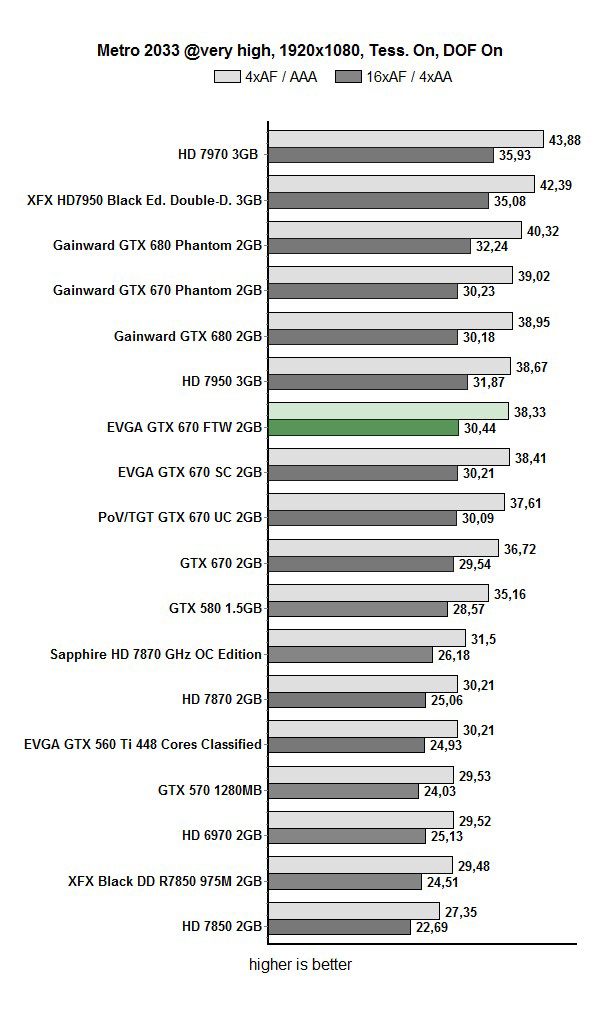
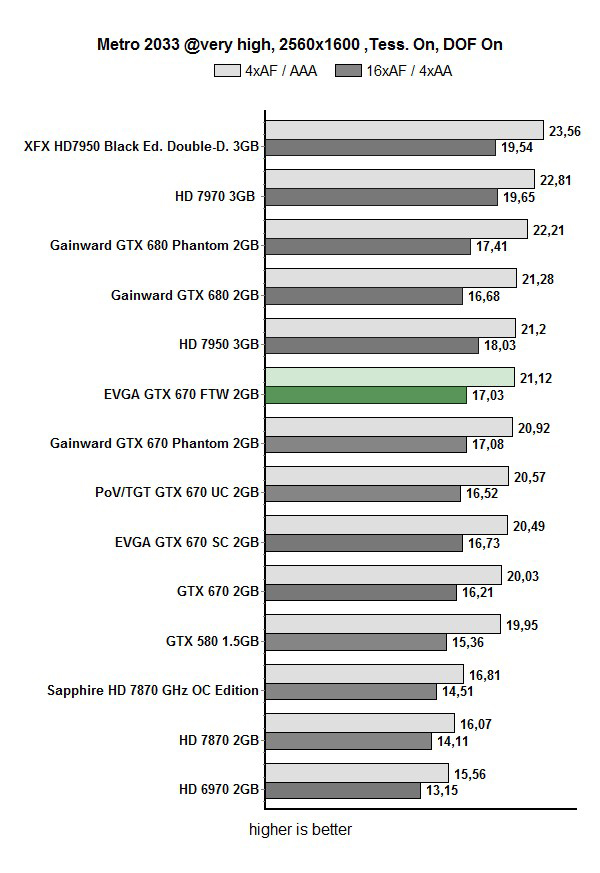
Aliens vs Predator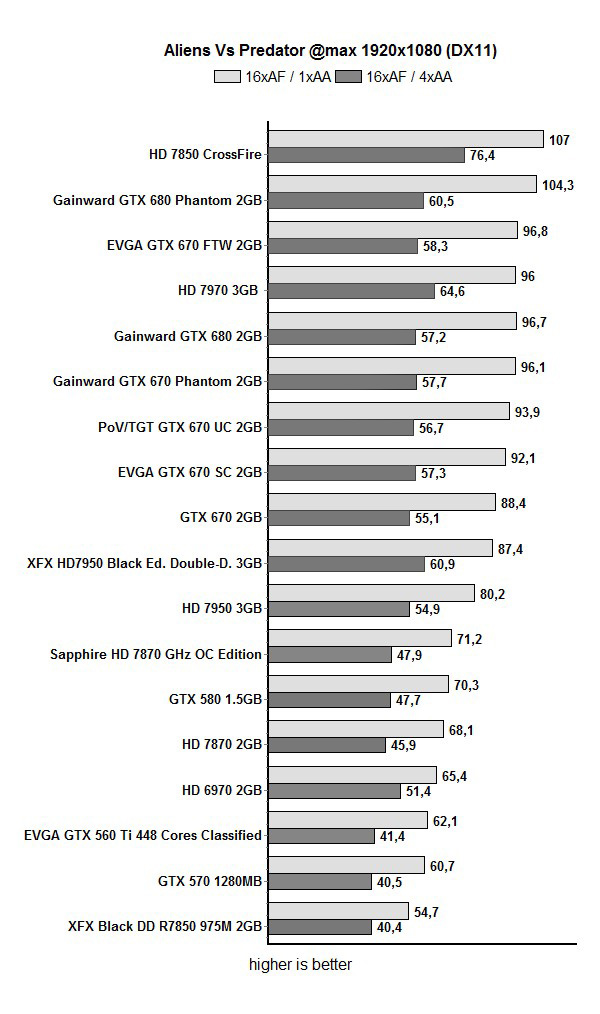

Unigine Heaven
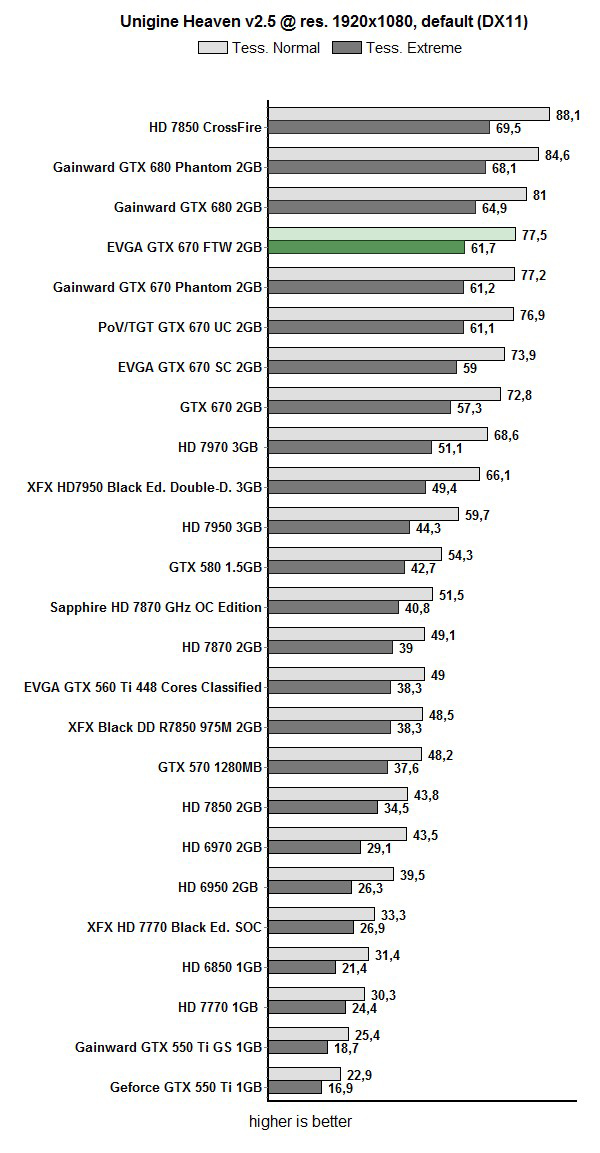
GPU Boost
If you have the GTX680/670, you know that leaving the card run is the first step of overclocking. Namely, GPU Boost technology will make sure to overclock the GPU once we start playing. Below you see a graph showing GPU clocks while playing Metro 2033 test at 2560x1600.
Although the base GPU clock on EVGA’s GTX 670 FTW is 1006MHz, we see that the average GPU clock is much higher, with a maximum climbing up to 1150 MHz.
We threw in GTX 670 Ultra Charged’s clocks as well, just for comparison. Naturally, even comparing two graphics cards with GPUs set at the same base clock, it’s possible to get different results. While quality of the chip itself may prove decisive, it’s the often the cards with quality cooling that score best.
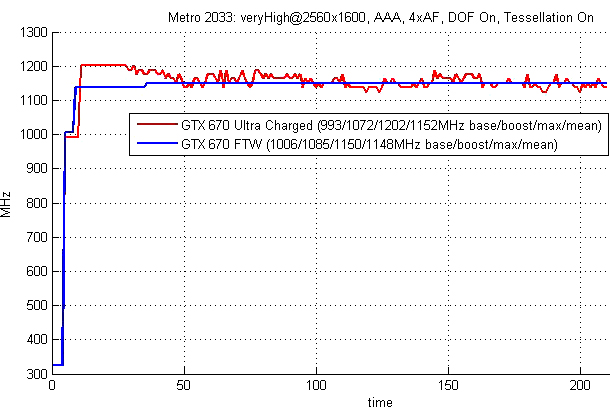
Overclocking
EVGA’s GTX 670 FTW comes factory overclocked for the GPU and memory, 1006MHz and 1552MHz respectively. The factory clocks are 915MHz for the GPU and 1502MHz for the memory. Quality cooling is a must when overclocking, which is something that EVGA’s GTX 670 FTW certainly has. In fact, the cooler was made for the GTX 680, and can handle the FTW’s needs with ease. Using the GTX 680’s PCB also allowed us to push the Power Target on EVGA’s GTX 670 FTW all the way up to +145 percent. In comparison, the GTX 670 Superclocked’s Power Target went up to +122 percent.
Although the aforementioned specs suggested better overclocking potential, we only managed to overclock the GPU by +55MHz (1061MHz). This is not a particularly impressive score, but the GTX 670 FTW’s advantage is that the cooler is almost inaudible.
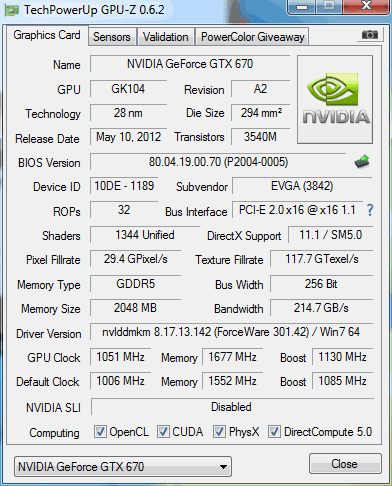
While the fan was in AUTO mode, we could overclock the GPU to 1051MHz, with the cooler remaining almost inaudible. Speeding the fan up to 80 percent RPM (maximum when using EVGA PrecisionX tool) made it too loud, but it helped us hit 1061MHz.
The memory ran stable after our 250MHz overclock, but when we hit +300MHz we occasionally had some instability.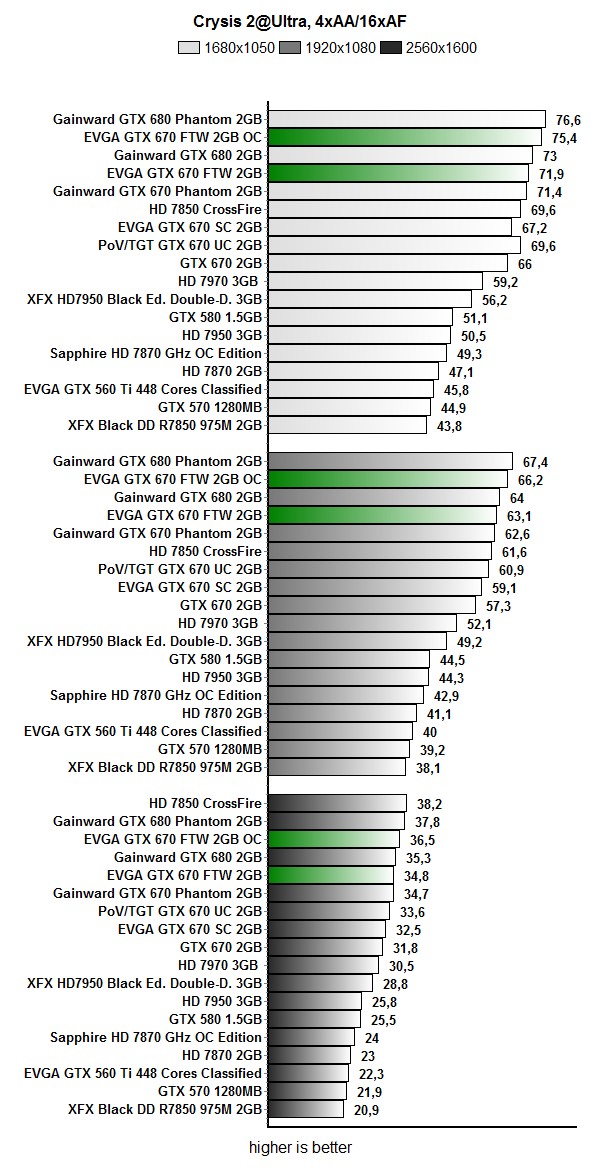
Thermals and Noise
EVGA did a great job taking the GTX 680’s design for its GTX 670 FTW graphics card. The fan is silent in idle mode but even when it’s under full load you won’t hear it until you’re really close to the computer. Bear in mind that the GPU was overclocked from 915MHz to 1006MHz and that the cooler is still silent. In fact, this is the best GTX 670 cooling solution we’ve tested so far.
Thermals weren’t particularly spectacular, but 77°C for a 1006MHz GPU is a solid achievement. The cooler will slash thermals even more when the fan is sped up and we measured 55°C at the maximum fan RPM. We think that EVGA did a good thing by sacrificing a few °C in order to keep noise down to a minimum.
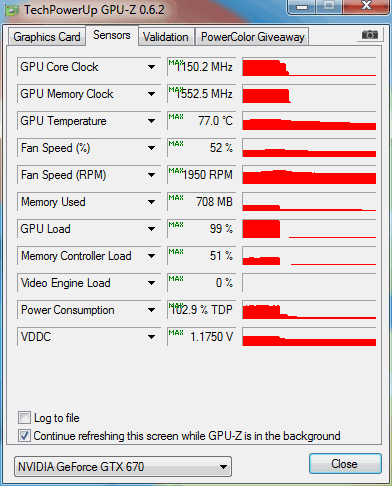
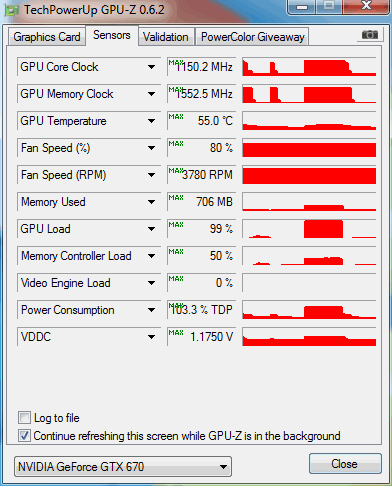
Consumption is comparable with the rest of GTX 670 pack. All in all, the GTX 670 performance-consumption ratio is excellent.
At the end of the day, it’s clear that EVGA’s GTX 670 For The Win is in fact a winner. The factory overclock ensured that the card scores really close to the GTX 680, which is quite appealing, especially after considering the difference in price. When buying any graphics card, especially the factory overclocked cards, we usually look at the cooling first. In many cases you’ll get higher clocks and improved performance at the expense of silence. This is not the case with EVGA’s GTX 670 FTW, which remains silent in pretty much any scenario.
The GTX 670 FTW is priced at about €390 (about $420), which is some €40-50 higher than reference GTX 670 cards. Considering the silence and a high factory overclock, we could say it’s worth it. Gaming performance of the GTX 670 is hardly worth discussing any more, since they are among the fastest graphics cards on the market. Since availability of GTX 680 cards is yet to become healthy, those waiting for one may find EVGA’s GTX 670 For The Win to be a worthy alternative, if not replacement.
